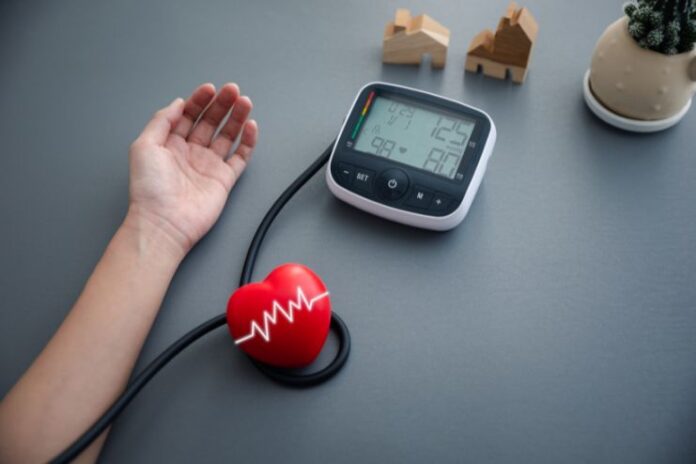Affiliate Disclaimer
Some links in this article are affiliate links. We may earn a small commission if you make a purchase through these links, at no extra cost to you. We only recommend products we find useful to our readersPhysicians from Queen Mary University of London, Barts Health NHS Trust, and University College London led the creation of a straightforward, minimally invasive treatment called Triple T (Targeted Thermal Therapy for high blood pressure) that could revolutionize the medical management of a common but frequently disregarded cause of high blood pressure.
Unknown Reason for High Blood Pressure
One in three people suffer from high blood pressure. Primary aldosteronism, a hormonal disorder, causes one in twenty cases, but less than 1% of individuals impacted receive a diagnosis.
Excess aldosterone, a hormone that raises blood pressure by raising salt levels in the body, is produced by benign nodules in the adrenal glands in this illness. Patients with PA have higher risk of heart attacks, strokes, and kidney failure and frequently do not react to traditional treatments.
What is Targeted Thermal Therapy (Triple T)?
The removal of the affected adrenal gland through surgery has been the sole successful treatment for PA (primary aldosteronism). This surgery, however, leaves many people untreated because it necessitates general anesthesia, a hospital stay, and weeks of recovery.
Without removing the gland, Targeted Thermal Therapy for blood pressure (Triple T) targets and destroys the faulty adrenal nodule, offering a quicker, safer, and less intrusive option, making it one of the best non-drug treatments for hypertension and a promising alternative treatment for high blood pressure.
The process delivers precise heat to the adrenal nodule using a combination of ultrasound and radiofrequency or microwaves. Under real-time ultrasound guidance, a doctor inserts a tiny needle through the stomach to the adrenal gland and uses brief heat bursts to destroy the troublesome tissue. This focused strategy guarantees that nearby healthy tissues sustain the least harm. No incision is needed, and the complete process takes about 20 minutes.
As a member of the Triple T (Targeted Thermal Therapy) trial team and the creator of the PET tracer technology, Professor Mark Gurnell, Clinical Endocrinology Lead at Addenbrooke’s Hospital and Professor of Clinical Endocrinology at the University of Cambridge, stated:
“More people with primary aldosteronism may be diagnosed and treated as a result of this work, which could reduce the number of people who need long-term blood pressure medication and their risk of cardiovascular disease and other problems.”
Current Research and Evidence
Excellent outcomes were obtained from the Feasibility Study of Radiofrequency Endoscopic Ablation with the Ultrasound Guidance (FABULAS) experiment, which evaluated Triple T on 28 PA patients. Most patients experienced normalized hormone levels after six months of the surgery, which was determined to be both safe and effective. The disease did not return, and many individuals were able to discontinue taking all blood pressure drugs.
Morris Brown, a Queen Mary University professor, points out a significant achievement: 70 years after the discovery of aldosterone, we can now detect treatable nodules that cause hypertension, confirming Dr. Jerome Conn’s prediction that 10–20% of cases may be treated. It represents a breakthrough in both diagnosis and therapy.
Conclusion
Due to the success of the FABULAs trial, more extensive research, WAVE, will compare Triple T therapy high blood pressure with standard surgery in 120 patients. Results are anticipated in 2027.
Professor Stephen Pereira, FABULAS Chief Investigator, emphasized the Triple T’s (Targeted Thermal Therapy) potential worldwide impact, stating, “This less invasive technique could be widely offered in endoscopy units across the UK and internationally.”
References
- https://health.economictimes.indiatimes.com/news/industry/new-treatment-offers-quick-cure-for-common-cause-of-high-blood-pressure/118138234
- https://www.qmul.ac.uk/media/news/2025/medicine-and-dentistry/fmd/new-treatment-offers-quick-cure-for-common-cause-of-high-blood-pressure–.html
- https://www.news-medical.net/news/20250208/Targeted-Thermal-Therapy-could-transform-management-of-common-cause-of-high-blood-pressure.aspx
- https://www.hopkinsmedicine.org/health/conditions-and-diseases/primary-aldosteronism
- https://www.ukri.org/news/new-diagnostic-technique-leads-to-high-blood-pressure-treatment
- https://www.endocrinology.org/about-us/governance/society-for-endocrinology-council/officers/professor-mark-gurnell
- https://www.qmul.ac.uk/whri/people/academic-staff/items/brownmorris.html
- https://www.ukri.org/news/new-diagnostic-technique-leads-to-high-blood-pressure-treatment
- https://www.sciencedaily.com/releases/2025/02/250210132401.htm
- https://www.researchgate.net/profile/Stephen-Pereira-2
- https://www.msn.com/en-gb/health/other/targeted-thermal-therapy-could-transform-management-of-common-cause-of-high-blood-pressure/ar-AA1yG6
In this Article





















